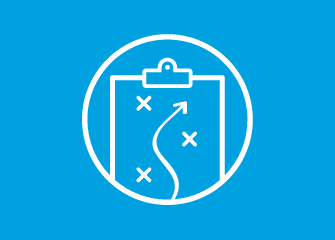Tackling 3 key B2B eCommerce challenges
B2B eCommerce marketing has rapidly grown over the last few years, offering huge potential as a sales channel for the large number of businesses around the world that sell their products through other businesses.
Whether you produce building materials, supply agricultural products, or operate in the tech industry, B2B eCommerce transactions are likely to be an increasingly important component of your business growth. These transactions are estimated to reach $1.2tn by 2023.
While many sales directors assume that B2B eCommerce operates in the same way as B2C when it comes to implementing a new strategy they often find themselves against a range of unique and puzzling challenges that thwart growth.
To make sure your B2B eCommerce strategy is a success, you need to make ensure you’re incentivizing the right behaviors from your sales troop. Whether it’s onboarding, referring friends, purchasing, or learning – you need to be modeling the behaviors you want to see.
Read on to learn about the 3 core challenges of B2B eCommerce adoption, and how behavior modeling can help you address them.
Lack of interest from the sales team
Channel partner onboarding can pose a serious challenge. Many companies find that once they’ve made their initial investment in a B2B eCommerce platform, customers are not immediately logging in and ordering.
First of all, it’s good to remember that millennials are increasingly using B2B eCommerce – they now constitute close to 50% of the market, up from 27% in 2013. These young professionals are much more receptive and open to using digital platforms to make their purchases. You just have to engage them.
To ensure the onboarding is smooth, it’s essential that these platforms are simple and gratifying to use. If the process is a headache or too complex, it will turn people off from the get-go.
Enabling the right tools is also important. For example, simplifying online buying with features specifically designed for B2B, including fast reorders, account hierarchies, contract pricing, custom catalogs, and more will help drive platform adoption
You can then make the process fun and rewarding by offering points as a thank you for signing up, or for bundle and repeat purchases, which can be redeemed for rewards. This is known as behavior modeling.
The older generation often requires more of a nudge. To attract the baby boomers and Generation Y’s from your channel partner ecosystem, why not offer rewards for referring a friend?
Making sure everything syncs up
Often sales reps find themselves reluctant to engage with completely new and seemingly irrelevant technology. And fair enough, they already have plenty of systems and platforms to get their head around.
That’s why it’s important that the eCommerce platform you provide integrates seamlessly with existing CRM software. If your sales reps use Salesforce, your eCommerce offering will benefit from being salesforce-native, offering buyers the seamless, self-service experience of online shopping with all the B2B functionality they demand. This also creates a single, 360-degree view of customer activity across sales, service, loyalty, incentives, and commerce.
Once all your systems are aligned, you can provide your sales team with the insights it needs to develop winning strategies by eliminating manual tasks and giving it access to real-time customer data.
What’s even going on? The perils of poor comms
According to an HBR survey, about 51% of executives listed lack of communication as a primary cause for failure to onboard new customers. Many B2B customers are put off by a lack of clear guidance about how to use an eCommerce platform. Therefore, it’s important to keep your customers updated during and after the implementation of your B2B eCommerce site.
You can start by sending personalized emails that introduce and highlight the benefits of eCommerce. You can also provide e-learning courses that delve into the benefits of utilization and the best practices for business success.
Also, B2B commerce (and B2B commerce sites) can sometimes appear to be complex and difficult to navigate, leading to diminished usage and adoption. Using videos and other training tools that address the concerns around the challenges of use will go a long way to solve that problem. The addition of incentivization software can also support the learning efforts as it enables you to incrementally reward salespeople and contractors for using these and other resources.
With the right investment of time in getting your sales team prepped and committed and a concerted effort to incentivize customer onboarding, your B2B commerce strategy is bound to be a great success.




